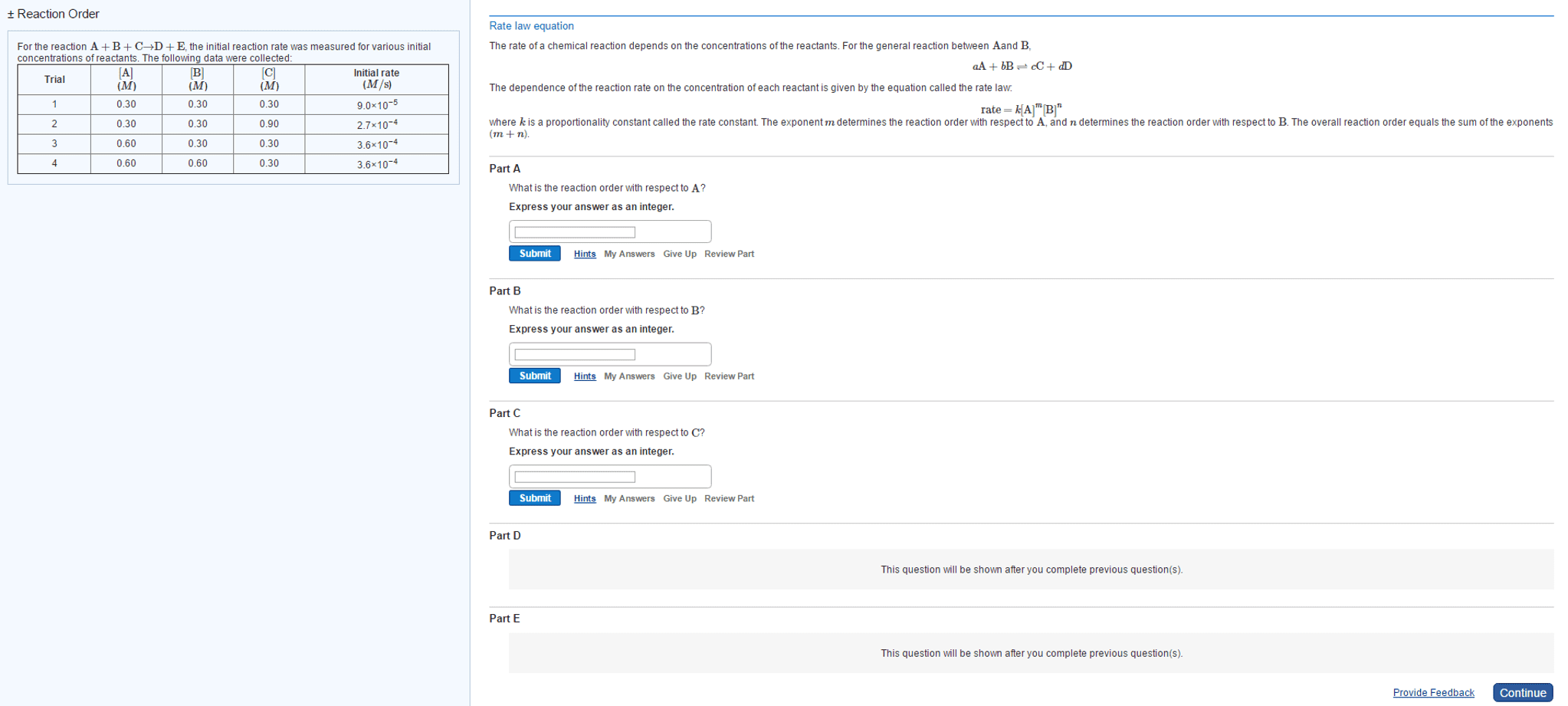CHM 131 Lecture Notes - Lecture 14: Reaction Rate Constant, Reaction Rate, Rate Equation
Document Summary
Temperature affects rate by affecting the number and energy of collisions. So an increase in temperature will have the effect of increasing reaction rate. Consider the following reaction aa + bb products. Rate law: equation describing the relationship between the reaction rate and concentration of a reactant or reactants. Rate = k[a]m[b]n where k is called the rate constant. General form of rate law: rate = k[a]^m [b]^n. [a], [b] concentration, in m or p k rate constant; units vary m, n reaction orders. M, n are called reaction orders - they indicate the sensitivity of the rate to concentration changes of each reactant. An exponent of 0 means the reaction is zero order in that reactant - rate does not depend on the concentration of that reactant. An exponent of 1, rate is directly proportional to the concentration of that reactant. If concentration is doubled, rate doubles - reaction is first order in that reactant.


